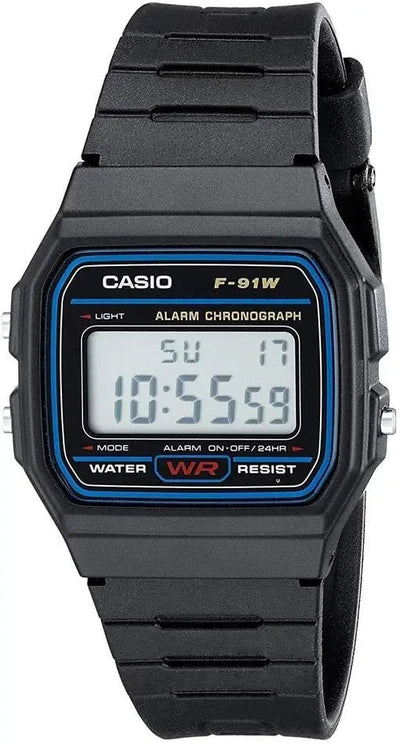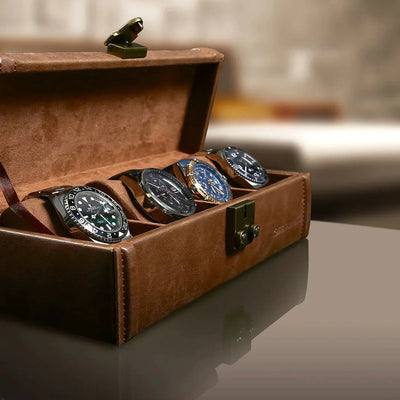
What is the best-selling watch in the world?
Which watch is the best-selling in the world among all the brands and models available on the market? We will explore...



Automatic watches represent the pinnacle of watchmaking craftsmanship, combining mechanical ingenuity with timeless elegance. Unlike battery-powered quartz watches, these sophisticated timepieces are powered by the natural movements of their owner's wrist. However, this feat of engineering comes with special maintenance requirements. What should you do when you don't wear your watch for several days? How can you maintain its precision? This is where an essential but often overlooked accessory comes in: the automatic watch winder.
An automatic watch, also known as a self-winding mechanical watch, operates using an internal rotor that oscillates with the movements of the wrist. This rotation generates the energy needed to wind the mainspring, thus storing the force that keeps the watch running. It's an ingenious system that eliminates the need to manually wind your watch every day.
However, this mechanism has natural limitations. Without regular movement, the power reserve of an automatic watch typically depletes within 40 to 72 hours, depending on the model. When a watch stops completely, not only does it lose its time and date accuracy, but its watchmaking fluids can also begin to solidify, potentially compromising the longevity and performance of the mechanism.

President – Smart Winder with Biometric Lock
An automatic watch winder mechanically replicates the natural movements of your wrist when you're not wearing your watch. This simulation keeps the mechanism in constant motion, ensuring the mainspring remains properly tensioned and the oils remain evenly distributed throughout the gears.
Think of your watch winder as a faithful guardian, watching over your precious watch collection even in your absence. For collectors or simply those who alternate between several watches, this accessory quickly becomes indispensable rather than a mere luxury.
When an automatic watch is kept in continuous operation using a winder, it not only keeps accurate time but also maintains its inherent accuracy. Frequent stopping and restarting can affect the fine adjustment of the balance wheel and create variations in accuracy over time.
Watch oils play a crucial role in reducing friction between the many moving parts of an automatic watch. When the movement stops for extended periods, these lubricants can congeal or accumulate unevenly. A watch winder keeps these oils in constant circulation, preventing premature degradation and reducing component wear.
Each stop and restart of an automatic watch places additional stress on its delicate mechanism. By minimizing these cycles, a watch winder significantly contributes to extending the overall lifespan of your timepiece, potentially reducing the frequency of costly maintenance.
Nothing is more frustrating than picking up an automatic watch only to find it has stopped and is displaying the wrong time. A watch winder ensures your watches are always ready to wear, with the time and date correctly set, eliminating this daily annoyance.

Ambassador – Signature Edition in Ebony Wood
The market offers an impressive variety of watch winders, from basic models to luxurious cases that can accommodate multiple watches. Here are the essential criteria to consider when making your selection:
Watch winders vary greatly in capacity (from 1 to 12 or more watches), materials (fine wood, leather, metal), and additional features like LED lighting or built-in storage drawers.
Each automatic watch model has specific winding requirements. Two parameters are particularly important:
Also consider power (mains or battery powered with a backup battery option), aesthetics that will complement your interior, and the possibility of future expansion if your collection grows.
Always consult your watch manual to determine the ideal winding settings. Overwinding can be as problematic as underwinding. Most quality winders allow you to customize the operating and resting cycles.
Your watch winder also deserves special attention. Place it away from magnetic sources, avoid direct sunlight, and dust it regularly. These simple precautions will ensure its optimal performance for many years to come.
Avoid overloading your winder or placing watches too large for the compartments. Never use a winder for non-automatic watches, and beware of low-end models that can generate magnetic fields that can harm the precision mechanisms.
A quality watch winder is more than just an accessory for your automatic watch—it's a wise investment in preserving your watchmaking heritage. By keeping your timepiece in constant motion, you not only ensure its daily precision, but also significantly extend its lifespan.
For lovers of fine watchmaking, collectors, or simply those who own several automatic watches, a watch winder quickly becomes an indispensable companion. It transforms the experience of owning an automatic watch, eliminating the hassle of frequent adjustment and helping to preserve the value of these mechanical marvels for future generations.
Remember that choosing a winder should be as thoughtful as choosing your watches themselves. A model tailored to the specific needs of your particular timepieces will ensure optimal protection and lasting satisfaction.

Which watch is the best-selling in the world among all the brands and models available on the market? We will explore...

It leaves no trace. No scratches, no dents. Nothing visible. And yet, magnetism is one of the quietest enemies of your automatic watch. ...

The world of watch boxes offers a multitude of options to meet various needs and preferences. From a simple storage box to...
Leave a comment
This site is protected by hCaptcha and the hCaptcha Privacy Policy and Terms of Service apply.